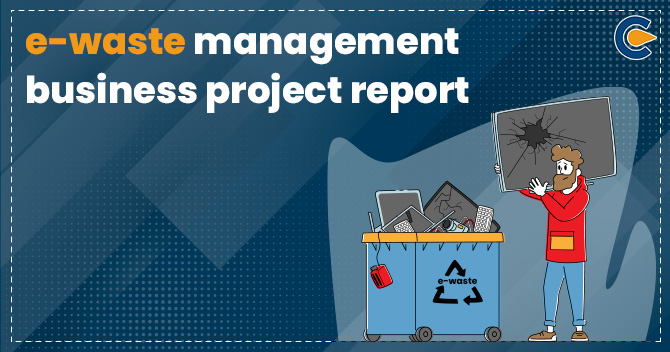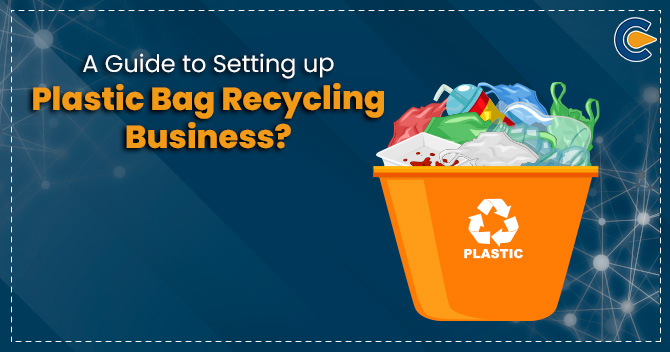The E-waste management business project report is a document which is made for giving the authorities comprehensive details on the business activities undertaken by the business owner. The project report must contain: –
- Market overview of the business undertaken, which in this case is E-Waste Management
- Overview of the subject matter of the business
- Overview of procedure and plant layout
- Licenses acquired for setting up the businesses
- SWOT Analysis
- Compliances required and fulfilled by Business owners
- Financial Breakups
Market overview of setting up E-Waste Management business
The market overview is also essential part of E-waste management business project report to estimate the overall growth of the business. According to various reports on E-Waste generation published by authorities, around 20 to 50 million tonnes of e-waste are estimated to generate yearly. In developing countries, E-waste includes more than 5 % of all generated solid waste, and the volume is estimated to grow 300 per cent per annum. The total e-waste generated in India is projected to cross 800,000 tons with the expectation to grow at a rate of 30 – 50 per cent each year. The current economic growth is sufficiently significant and developing at a more than 30 per cent rate.
According to the Article published by the Indian Brand Equality Foundation National Resource Efficiency Policy drafted by the MoEFCC estimate, the recycling and management rate must extent to 50 per cent in the next five. The IFC (International Finance Corporation)[1] predicts that by 2025, India’s Waste Electrical and Electronic Equipment business will create 4.5 lakh direct jobs and a surplus of 1.8 lakh jobs in associated manufacturing and transportation-related industries.
Overview of the subject matter of the business
E-Waste is defined as Waste of Electrical and electronic equipment that has reached its end life and has been rendered useless by the consumers.
The approved list for E-Waste management business provided by the Central Pollution Control Board
| S.No. | Categories of Electrical and Electronic equipment | EEE Code |
| Information Technology and Telecommunication Equipment | ||
| 1 | Personal Computing: Personal Computers | ITEW2 |
| 2 | Centralised data processing: Mainframe and Minicomputer | ITEW1 |
| 3 | Personal Computing: Laptop Computers | ITEW3 |
| 4 | Personal Computing: Notebook Computers | ITEW4 |
| 5 | Personal Computing: Notepad Computers | ITEW5 |
| 6 | Printers including cartridges | ITEW6 |
| 7 | Copying equipment | ITEW7 |
| 8 | Electrical and electronic typewriters | ITEW8 |
| 9 | User terminals and systems | ITEM9 |
| 10 | Facsimile | ITEW10 |
| 11 | Telex | ITEW11 |
| 12 | Pay telephones | ITEW13 |
| 13 | Cordless telephones | ITEW14 |
| 14 | Cellular telephones | ITEW15 |
| 15 | Answering System | ITEW16 |
| 16 | Telephones | ITEW12 |
| Consumer Electrical and Electronic Products | ||
| 1 | Television sets | CEEW1 |
| 2 | Refrigerator | CEEW2 |
| 3 | Washing Machine | CEEW3 |
| 4 | Air-conditioners, exclusive of centralised air conditioning plants | CEEW4 |
| 5 | Fluorescent and other Mercury-containing lamps | CEEW5 |
Essential for setting up E-Waste Management business
One of the basic requirements for making an E-waste management business project report is to list down compliances that are fulfilled by the business that are prescribed by the CPCB in their Implementation Guidelines of E-Waste (Management) Rules, 2016. Some of the essentials for setting up an E-Waste Management business are: –
- The business that is being set up must install proper wastewater treatment operations for the treatment of wastewater as well as proper air pollution control equipment, which depends on the type of management process.
- There should also be proper noise control devices installed for bid manufacturing units like crushers, grinders and shredders
- The management plant that has the capacity of 1 ton per day requires adequate space of 500 square meters
- In case the business includes the dismantling process, then for 1T/day capacity then minimum 300 square meter area is required for storage of raw material, segregated material, dismantling operations and office/ administration & other utilities
SWOT Analysis
SWOT Analysis means the strong point of the E-Waste management business as well as weaknesses, opportunities, and threats concerning a particular operation which need to be reflected properly in the e-waste management business project report. It implicates the strong point of the E-Waste management business, including benefits, expertise, and knowledge in the field of e-Waste management or any other factor that can be added as a positive attribute to the business profile of the recycling plant. Apart from Strengths, SWOT analysis also tells the possible weakness of recycling plants, Opportunities in the market that can assist in the growth of the recycling unit, and at last, the analysis must contain the possible thread which can have an adverse effect on the development of the market.
Overview of procedure and plant layout in e-waste management business project report
The E-Waste management process that is undertaken by the plant must also be included in the E-waste management business project report to give an overview of the activities conducted and whether those align with the guidelines prescribed by Central Pollution Control Board. The process that is followed is: –
- Collection and transportation
- Segregation
- Classification
- Processing
- Dismantling
- Classification of dismantled parts
The manufacturing process must include
- Cutting Mill required for electronic circuit boards, wires and small parts
- Granulation Mill for e-waste with primary separation
- Vibratory Feeder Assembly for Granulation Mill
- Enhanced Air Purification System
- Conveyor Belt (10 ft)
- Magnetic Separator
- Fraction Separator
- Feeder Assembly for Fraction Separator
- Electrical control panel
Licenses were acquired for setting up the businesses
The e-waste management business project report must comprise authorisations and licenses needed for E-Waste Management as mandated under the E-Waste (Management) Rules, 2016. These approvals are granted by the Central Pollution Control Board or State Pollution Control Board, regulated under the MoEFCC (Ministry of Environment, Forest and Climate change). The authorisations needed are: –
- Company license
- EPR Authorisation for E-Waste
- RoHS (Restriction of Hazardous Substances in Electrical and Electronic Equipment) Certificate
- Consent to Establish under Air and Water Act
- Consent to Operate under Air and Water Act
Financial Breakups to be mentioned in e-waste management business project report
Further, the E-waste management business project report must also include the financial breakup of the business divided into Capital Expenses and Operational Expenses.
Capital Expenses
- Expense of Land
- Setup Cost
- Cost of manufacturing plant
Operational Cost
- Salaries
- Scrap Cost
- Utility expenses such as electricity and water
- Logistics expenses
- Spares and consumable
- Contingency expenses
Post Compliances for E-Waste Business Management
At last, the report also must contain the manufacturer’s submission with the post-compliance requirement guided by the CPCB/SPCB (Central Pollution Control Board/State Pollution Control Board). The Post compliances include: –
- Maintaining records
The E-Waste Management business shall keep a record as specified under Form number-2 of the E-Waste handled and make the archives accessible for examination by the Central Pollution Control Board and State Pollution Control Board.
- Annual Return
Form-3 must be completed by the business owner and submitted to CPCB (the Central Pollution Control Board) on the 30th day of June the following year. In the case of multiple locations of the E-Waste Management business, they must also file a single annual return containing information from the locations of the offices.
Conclusion
E-Waste Business Management Business report is necessary to provide authorities with a clear picture regarding the business activity of E-Waste Management business owners. While preparing a business report, the owner becomes more explicit about their activities and focuses more on the compliances fulfilled by them. These project report also act as a business prospect for the operation to attack more funders and investments.
Read our Article:How to start an E-waste Management Business in India?











